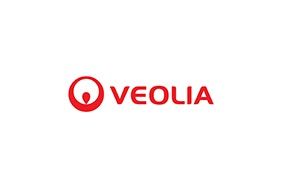The “3rd P”: Why Partnership Is the Key to Successful Public-Private Collaboration
Published 06-25-25
Submitted by Veolia North America

Water—something many take for granted—is the most essential service communities depend on. The quality of that service is directly tied to the quality of the people who provide it. Over the decades, water industry challenges have grown more complex due to the increasing demand on water and aging infrastructure. These challenges require evolving solutions where pivotal public-private collaboration has become not just useful, but necessary.
Public-Private Partnerships, or PPP’s, have become a major part of that evolution. On paper, the idea makes perfect sense: the private sector brings expertise, innovation, digital solutions and efficiency, while the public sector provides accountability, oversight and a focus on community needs. In theory, it’s a win-win. But in practice, the real measure of success in PPP’s has never been about what’s written in the contract. It’s not only about metrics or service level agreements—though those are important. It’s about the people on both sides committing to something bigger than the business transaction. That’s where the third “P” comes in: Partnership.
Beyond Contracts: What Makes a True Partnership
At its core, a PPP is not just a financial or legal arrangement; it is a relationship. The people leading public institutions and their private sector partners must work together toward a shared vision, aligning their incentives and contributions with the goal of serving the public in a long-term and reliable relationship that provides efficiency and stability to the community. If a partnership is merely transactional—where each side is focused on its own interests—then the partnership is at risk.

Trust and transparency, shared risk and reward, and long-term commitment—when these elements are present, PPP’s become more than just a deal—they become an engine for sustainable development and innovation.
When partnership is an afterthought: projects stall, trust erodes, and communities lose out. However, when it’s the foundation, great things happen.
The Pillars of a Strong Partnership
To make the Third P a reality, stakeholders must focus on building a robust and cooperative relationship. Here are the core pillars of a strong partnership:
- Trust & Transparency: Trust is the foundation of any successful partnership. Both parties must be transparent about project goals, expectations and regulatory frameworks, while private partners should be open about financial models, challenges and operational strategies.
- Shared Goals, Risk & Incentives: If the public sector prioritizes affordability while the private sector focuses solely on profit, the partnership will break down. The key is to design agreements that align incentives with risk, ensuring that both sides benefit from long-term success.
- Adaptability & Problem-Solving: Unexpected challenges—economic shifts, political changes or technological advancements—are inevitable in long-term PPPs. The best partnerships are those that can adapt, renegotiate and solve problems together.
Making the 3rd P the First Priority
The world has just begun to discover how powerful public-private partnerships can be—not just for a contract, but for building trust and progress in the communities we call home. The third “P” has been the common thread throughout the journey.
The success or failure of a PPP doesn’t just depend on funding, contracts or political will—it hinges on the quality of the partnership itself. Governments and businesses that prioritize collaboration, trust and shared success will create sustainable projects that benefit everyone.

By focusing on the 3rd P—Partnership we can rethink how PPPs are structured, ensuring they are not just legal agreements but dynamic, cooperative relationships that drive real progress. And when that partnership is grounded in professional operations, it brings consistency, accountability and long-term value to the communities we serve.
Because in the end, it’s not the public or private that makes the difference—it’s the partnership.

Veolia North America
Veolia North America
Veolia's ambition is to become the benchmark company for ecological transformation. With nearly 218,000 employees on five continents, the Group designs and deploys useful, practical solutions for managing water, waste and energy that help to radically change the world. Through its three complementary activities, Veolia contributes to developing access to resources, preserving available resources and renewing them. In 2023, the Veolia group served 113 million people with drinking water and 103 million with wastewater services, produced 42 terawatt-hours of energy and recovered 63 million metric tons of waste. Veolia Environnement (Paris Euronext: VIE) generated consolidated sales of €45.3 billion in 2023. A subsidiary of Veolia group, Veolia North America (VNA) offers a full spectrum of water, waste and energy management services, including water and wastewater treatment, commercial and hazardous waste collection and disposal, energy consulting and resource recovery. VNA helps commercial, industrial, healthcare, higher education and municipality customers throughout North America. Headquartered in Boston, Mass., Veolia North America has more than 10,000 employees working at more than 350 locations across the continent.
More from Veolia North America

